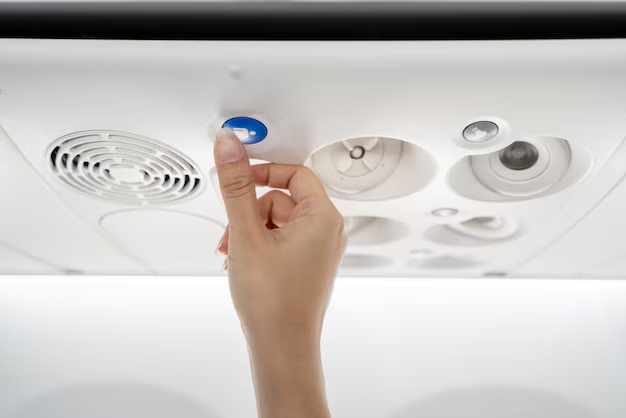Choosing the Right Light Bulb for Your Refrigerator: A Complete Guide
When it comes to maintaining your refrigerator, selecting the right light bulb might not be the first thing on your mind. Yet, this small component plays a significant role in how you interact with your fridge, especially when you're rummaging through the shelves in the dark of night. With several types of light bulbs available today, identifying the perfect match for your fridge can be surprisingly nuanced. This guide will walk you through the essentials of choosing and replacing refrigerator bulbs, ensuring your appliance remains bright and functional. 🌟
Understanding Refrigerator Light Bulbs
What Makes Refrigerator Bulbs Special?
Refrigerator light bulbs are specifically designed to withstand cold environments and operate safely within the appliance's interior. Unlike regular bulbs, they are built to ensure that the low temperatures of a fridge don't affect their functionality or longevity. Here are some characteristics that set them apart:
- Cold-Resistant Design: Refrigerator bulbs are made to endure the chilly conditions without performance issues.
- Safety: These bulbs are encased to reduce the risk of shattering and are suitable for use around food.
- Voltage and Wattage: Typically, they use lower wattage to complement the confined spaces and the appliance’s overall energy efficiency.
Types of Refrigerator Light Bulbs
Several types of light bulbs can be used in refrigerators, each with its own pros and cons. Selecting the right type involves considering compatibility, energy consumption, and lighting quality.
Incandescent Bulbs
The traditional choice, incandescent bulbs, are known for their warm glow. They are generally inexpensive and fit a wide range of appliance sockets. However, they are not the most energy-efficient option:
- Pros: Provide warm, pleasant light; affordable.
- Cons: Higher energy usage; shorter lifespan compared to modern alternatives.
LED Bulbs
LED bulbs have increasingly become the go-to for many modern refrigerators due to their energy efficiency and durability:
- Pros: Energy-efficient; long lifespan; minimal heat production, reducing strain on the fridge’s cooling system.
- Cons: Slightly more expensive upfront; may require compatible sockets.
Compact Fluorescent Bulbs (CFL)
Though not as common today, CFLs are another option for those looking for energy savings:
- Pros: Longer lifespan than incandescent; lower energy use.
- Cons: Contain a small amount of mercury, requiring careful disposal; slower to reach full brightness.
How to Choose the Correct Bulb for Your Refrigerator
Compatibility: First and Foremost
The first step is to consult your refrigerator’s user manual or check the existing bulb for details on the recommended type, wattage, and base size. Most refrigerators are designed for specific bulb types, which is crucial for ensuring optimal operation and safety.
- Note: Bulbs with a standard E26 base often fit many models; however, verify compatibility with your specific appliance to avoid installation issues.
Consider Energy Efficiency
Energy-efficient bulbs help reduce your electricity bill and are better for the environment. LEDs are often the best choice here, offering substantial savings over time.
- Tip: When opting for efficiency, check whether your fridge model supports LED lighting if your current bulbs are incandescent.
Assess Lighting Needs
Consider your lighting preference based on how your refrigerator is arranged and used. For fridges with deep shelves or less accessible corners, a bright LED might be more beneficial than a softer incandescent:
- Adequate Illumination: Ensure the bulb provides sufficient light for every nook and cranny.
- Color Temperature: LEDs come in various color temperatures, from warm (yellowish) to daylight (bluish) tones. Choose according to your taste and how you perceive your food storage.
Troubleshooting Common Refrigerator Bulb Issues
Why Won’t My Refrigerator Light Turn On?
There are several reasons why a refrigerator light might fail, and identifying the cause is essential for troubleshooting:
- Burned-out Bulb: The most common scenario. Replace the bulb with the same type and wattage.
- Faulty Socket: If the new bulb isn't working, check for corrosion or damage.
- Door Switch Malfunction: The switch that automatically turns off the light when the door is closed might be faulty.
- Wiring Issues: Electrical connection problems may require professional inspection.
Replacing the Refrigerator Light Bulb
Replacing a refrigerator light bulb is a simple task, usually involving just a few steps:
- Unplug the Refrigerator: Safety first! Ensure the appliance is unplugged before replacing the bulb.
- Remove the Old Bulb: Gently unscrew the old bulb. If it’s stuck, use caution to avoid breaking the glass.
- Install the New Bulb: Screw in the new bulb, ensuring it’s securely in place but not over-tightened.
- Power Up: Plug the refrigerator back in and check the new bulb’s functionality.
Preventing Future Problems
While replacing a bulb isn’t complex, taking some precautions can extend the life of your refrigerator light:
- Avoid Frequent On/Off: Minimize the number of times you open and close the door to prolong bulb life.
- Clean Regularly: Dirt and dust can accumulate in the socket, affecting the bulb’s performance. Clean the interior periodically with a dry cloth.
Summary: Key Takeaways for Choosing Refrigerator Bulbs 🔍
Here's a concise list to summarize the essentials when selecting and managing your refrigerator light bulbs:
- 🛠️ Compatibility Matters: Always check your refrigerator’s manual for bulb type recommendations.
- 💡 Opt for LEDs: They're energy-efficient, durable, and provide bright illumination.
- ⚡ Consider Energy Use: Light up your fridge without racking up the energy bill.
- 🔍 Troubleshoot Wisely: If issues arise, inspect the bulb, socket, and door switch.
- 🧹 Maintain Regularly: Simple maintenance can extend bulb lifespan and functionality.
Final Insights
Choosing the right light bulb for your refrigerator is an often-overlooked aspect of home maintenance that, when done correctly, enhances both appliance efficiency and user convenience. Whether you're upgrading to LEDs for energy savings or replacing a worn-out bulb with a new version, this decision significantly impacts your kitchen experience. By following the guidelines provided here, you'll ensure your refrigerator remains a bright spot in your home ecosystem. 💡
